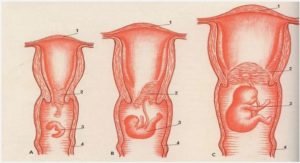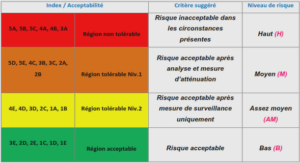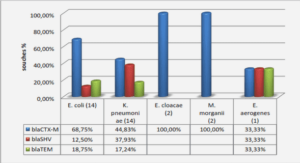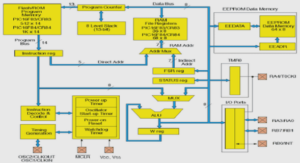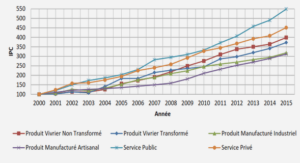Echographie-Doppler et Elastométrie par onde de cisaillement
Chronic liver disease usually remains asymptomatic for many years and advanced stages are only diagnosed late, when life-threatening complications occur. Early diagnosis of liver fibrosis is therefore important for identifying patients with severe hepatic disease and for delaying its development by introducing specific treatments. Liver biopsy remains the basis for the diagnosis and staging of liver fibrosis [1]. However, due to the high burden of chronic liver diseases, this invasive method cannot be used as a first-line procedure. Non invasive tests of liver fibrosis have recently been developed. Blood tests (FibroMeter, Fibrotest, CirrhoMeter) [2-4] and liver stiffness measurement (LSM) with Fibroscan (Echosens, Paris, France) using Vibration Controlled Transient Elastography [5, 6] produce good results. Unfortunately, these tools are usually employed after the patient has been referred to a hepatologist for a biological abnormality or a symptom suggestive of chronic liver disease. Therefore, the bulk of the population with asymptomatic chronic liver disease does not derive any benefit from these diagnostic tools .
Before the rise of blood tests and LSM, ultrasound (B-mode and Doppler) parameters were shown in numerous studies to be able to diagnose liver fibrosis. Similarly, we have recently shown that severe liver fibrosis is associated with the presence of three simple Dopplerultrasound (Doppler-US) signs: irregularity of liver surface, spleen diameter ≥110 mm, and demodulation of hepatic veins flow [7]. Since abdominal ultrasound is widely used to investigate numerous symptoms, it would appear to be an excellent tool for the detection of severe liver fibrosis. However, despite the fact that our three Doppler-US signs can diagnose severe liver fibrosis with high sensitivity, they still lack specificity, and would cause a high rate of unnecessary referrals to specialists. In recent years, most manufacturers have developed shear wave elastography modules in their Doppler-US devices. Specifically, Siemens have developed a point shear wave elastography using Acoustic Radiation Force Impulse (VTQ: Virtual Touch Quantification, Siemens Medical Solutions, Mountain View, CA) [8], and Aixplorer have developed twodimensional shear wave elastography (SSI: Supersonic Shear Imaging, Supersonic Imaging, Aix-en Provence, France) [9]. These two elastography methods have previously shown very good diagnostic accuracy in the assessment of liver fibrosis in chronic liver disease [10, 11]. Therefore, VTQ and SSI would appear promising in terms of improving the specificity of the Doppler-US signs within the same examination, which would finally open up the possibility of more accurate detection of severe liver fibrosis.
The aim of our study was twofold: first, to validate the three Doppler-US signs for the diagnosis of severe liver fibrosis in a large cohort of patients; second, to assess whether the addition of elastography improves the specificity of Doppler-US diagnosis of severe liver fibrosis.
PATIENTS AND METHODS
Patients
All patients with chronic liver disease who consecutively underwent a liver biopsy in the Hepato-Gastroenterology Department of our institution from December 2009 to October 2016 were eligible for inclusion in the study. Exclusion criteria were: decompensated liver disease (jaundice, ascites, encephalopathy, variceal bleeding) and suspected or confirmed hepatocellular carcinoma. All patients gave written informed consent for the prospective cohort study and Institutional Review Board approval was obtained.
Liver histology
Liver biopsies were performed using Menghini’s technique with a 1.4-1.6mm diameter needle. Biopsy specimens were fixed in a formalin-alcohol-acetic solution and embedded in paraffin; 5 µm- thick sections were then cut and stained with haematoxylin-eosin-saffron. Pathological examinations were performed by a senior specialist in hepatology (SM) and blinded for patient data. Liver fibrosis was staged from F0 to F4 according to the METAVIR scoring system: F0 = no fibrosis; F1 = portal fibrosis without septa; F2 = portal fibrosis and few septa; F3 = numerous septa without cirrhosis; F4 = cirrhosis. “Significant liver fibrosis” was defined as F ≥2 stages and “severe liver fibrosis” as F ≥3 stages. Liver biopsy was taken as the reference for the assessment of liver fibrosis and severe liver fibrosis was the primary diagnostic target of the study.
FibroScan
LSM with FibroScan was performed using the standard M probe by a specialist nurse with an experience of more than 500 procedures, who was blinded to patient data. LSM was performed under fasting conditions on the day of VTQ and SSI measurements and of the liver biopsy. Examinations were conducted as recommended by the manufacturer [13]. The result (kPa) was the median of 10 valid measurements.
Statistical analysis
Quantitative variables were expressed as mean ± standard deviation and compared using the Mann-Whitney test. Qualitative variables were expressed as percentages and compared using the Fisher’s Exact Test. Correlations between quantitative variables were assessed using the Spearman’s rank correlation coefficient (Rs). Diagnostic accuracy of elastography devices for binary diagnostic targets (significant F ≥2 fibrosis, severe F ≥3 fibrosis, or cirrhosis) was assessed using the Area under Receiver Operating Characteristic (AUROC) and the rate of correctly classified patients according to the highest Youden index that maximises sensitivity and specificity. We also used the new Obuchowski index which is a multinomial version of the AUROC adapted to ordinal references such as pathological fibrosis staging [14, 15]. The Obuchowski index ranges from 0 to 1 and the result can be interpreted as the probability that the non-invasive test will correctly rank two randomly chosen patients with different fibrosis stages. A p value <0.05 was considered as statistically significant. Statistical analyses were performed using SPSS version 18.0 software (IBM, Armonk, NY, USA). Results were reported in accordance with the recently published LiverFibroSTARD statements [16].
RESULTS
Patients
A total of 514 patients referred to our institution for suspicion of liver disease were included in the study. Their characteristics at the time of inclusion are summarised in Table 1: 62.5% were male, mean age was 53.8±13.7 years, and mean body mass index was 29.8±6.3 kg/m2. Non-alcoholic fatty liver disease was the main cause of chronic liver disease (54.3%), followed by viral hepatitis (16.0%) and alcohol abuse (15.0%). Mean biopsy length was 32±11mm, 89.2% had ≥20 mm length and 95.7% had ≥15mm. The prevalence of significant fibrosis, severe fibrosis, and cirrhosis was 44.2%, 23.0%, and 7.8%, respectively. Failure of LSM occurred in 47 patients with Fibroscan (9.1%) and in only one patient with VTQ (0.2%, p <0.001 vs Fibroscan). As it has only been available since May 2012, SSI was performed in 326 patients of whom 3 had measurement failure (0.9%). None of the patients who experienced LSM failure with Fibroscan also experienced LSM failure with VTQ (and with SSI when available). An LSM result was available for all three devices in 292 patients (core group).
Validation of the three Doppler-ultrasound signs
The population in the present study did not overlap with the population in our previous work, in which we identified the three Doppler-US signs associated with severe liver fibrosis [7]. Among the seven Doppler-US signs evaluated in the 514 patients included in the study, three were independently associated with severe fibrosis (stepwise forward multivariate binary logistic regression): liver surface irregularity (1st step, p <0.001, Odd Ratio: 2.6 [1.7-4.1]), spleen length ≥110mm (2nd step, p <0001, Odd Ratio: 2.4 [1.6-3.8]), and demodulation of hepatic vein flow (3rd step, p=0.004, Odd Ratio: 1.9 [1.2-3.1]). Table 2 shows the accuracy of the three Doppler-US signs, alone or in combination, in the diagnosis of severe fibrosis. As expected, the presence of at least one of the three signs provided the highest sensitivity (85.6%) but also the lowest specificity (36.1%).
Diagnostic accuracy of elastography devices
Fibroscan, VTQ and SSI results were well correlated : Fibroscan vs VTQ: Rs=0.588 (p <0.001); Fibroscan vs SSI: Rs=0.633 (p <0.001); VTQ vs SSI: Rs=0.539 (p <0.001). For each device, AUROCs and Obuchowski index in the core group were similar than those observed in the maximum population . Direct comparison of AUROCs and Obuchowski index in the core group showed that Fibroscan was significantly more accurate than VTQ and SSI. There was no significant difference between the diagnostic accuracy of VTQ and SSI. The best diagnostic cut-offs for significant fibrosis, severe fibrosis, and cirrhosis were determined for each device according to the highest Youden index in their maximum population . VTQ and SSI showed excellent >90% negative predictive value and very good >80% sensitivity for the diagnosis of severe fibrosis, making them of significant interest as second-line procedures to increase the specificity of the three simple Doppler-US signs .
DISCUSSION
Elastography is a non-invasive technique which shows good performance in the diagnosis of hepatic fibrosis. However, it is not possible perform elastography in the entire population, or even in all patients undergoing an abdominal ultrasound examination. Our strategy of concentrating on simple ultrasound signs and, if some of them are present, performing elastography measurements secondarily, has the advantage of avoiding the extension of elastography to all patients, retaining a simple initial test before carrying out more timeconsuming measurements on a smaller number of subjects. The multivariate analysis identified three simple Doppler-US signs as independently associated with severe liver fibrosis: liver surface irregularity, spleen length ≥110 mm, and demodulation of hepatic veins flow. This result confirms the finding of our previous study performed in a different set of patients [7]. These signs are among the most often reported in the literature for the diagnosis of severe fibrosis [17, 18]. Interestingly the addition of acoustic elastography after detection of these ultrasound signs dramatically improved the diagnostic performance, and especially specificity (36% to 81 %,) for a moderate cost in terms of sensitivity (86% to 74%).
|
Table des matières
INTRODUCTION
MÉTHODES
1. Patients
2. Biopsie hépatique
3. Echographie-Doppler et Elastométrie par onde de cisaillement
4. Fibroscan
5. Analyses statistiques
RÉSULTATS
1. Patients
2. Validation des trois signes Echo-doppler
3. Précision diagnostique des dispositifs d’élastographie
4. Combinaison de l’échographie Doppler et de l’élastographie
DISCUSSION ET CONCLUSION
![]() Télécharger le rapport complet
Télécharger le rapport complet

